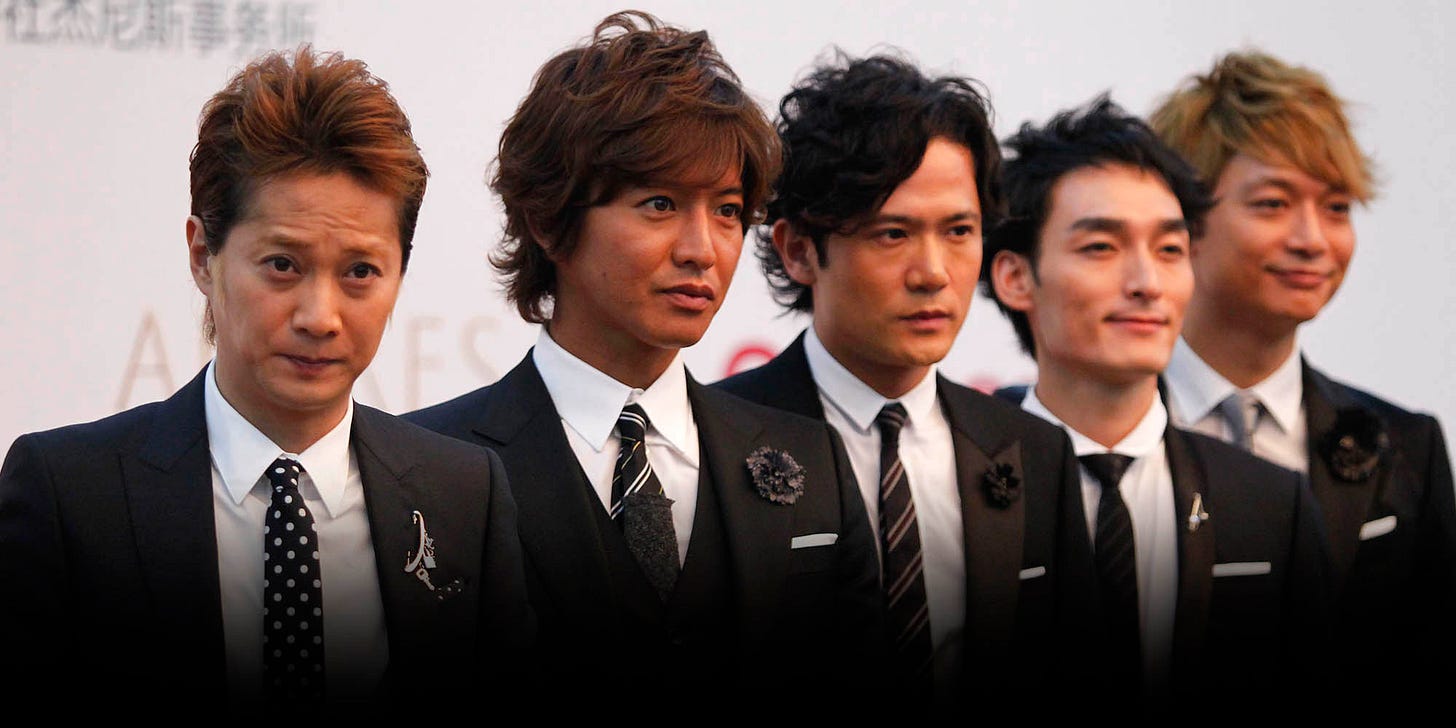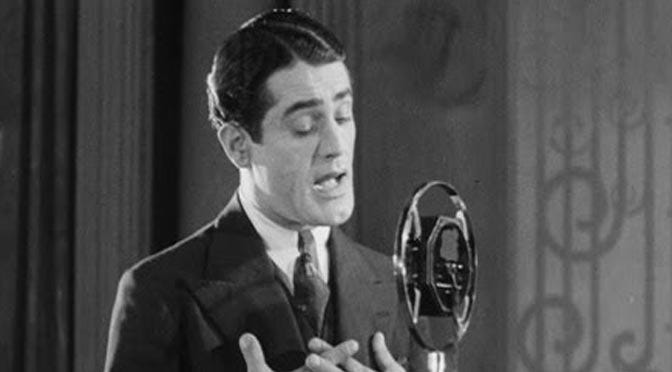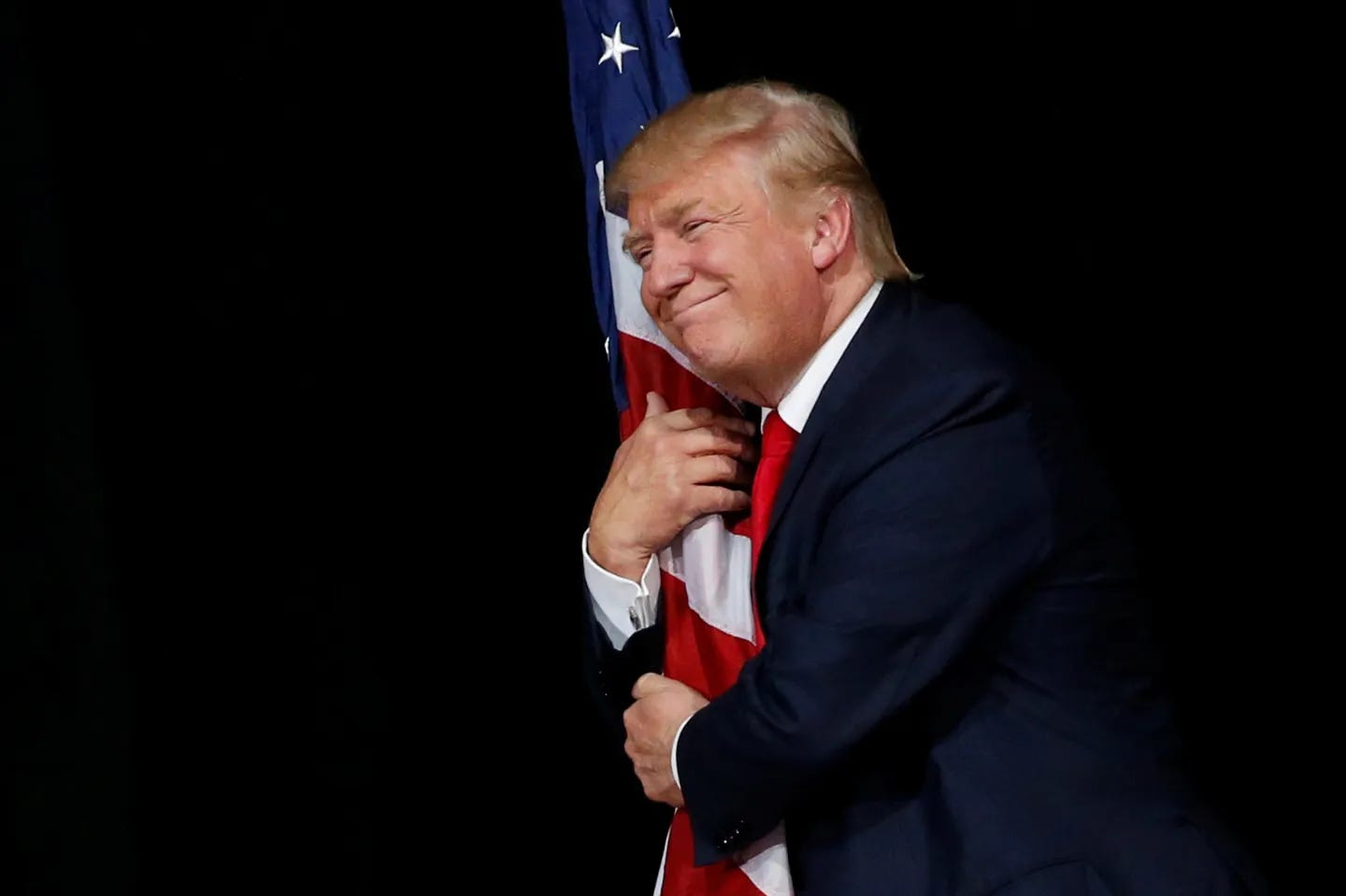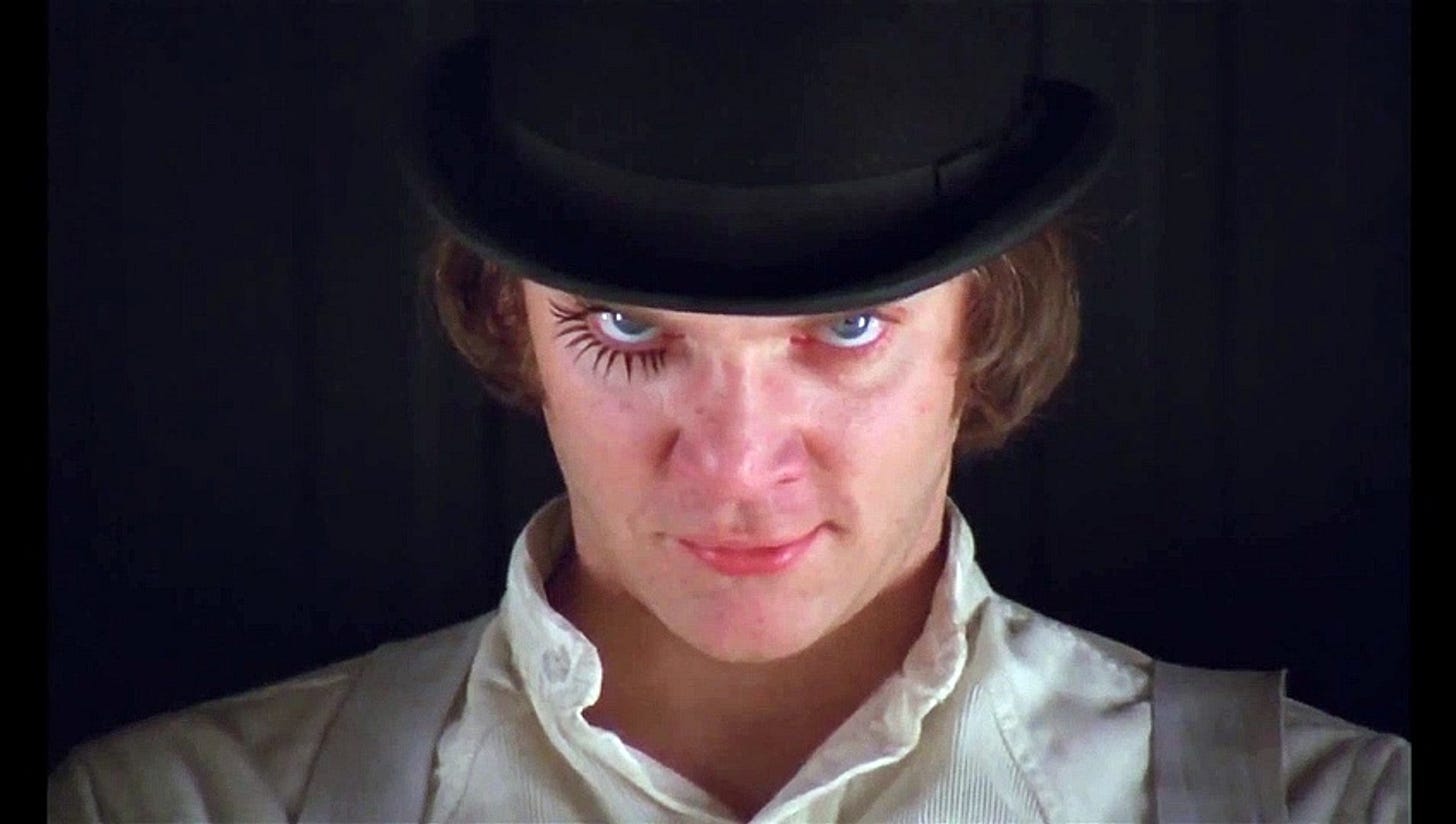Bonus Perspectives: Trump's War on Birthright Citizenship, Fuji TV Scandal, Stanley Kubrick's Last Films, and Al Bowlly
Debates in the U.S. over birthright citizenship, the Japanese entertainment world is rocked by a major scandal, and your weekly media recommendations.

Bonus Perspectives is a weekly column series containing my thoughts on the latest international news and Japanese news, as well as film, television, music, book, and video game recommendations. It’s free for all subscribers to this Substack, but if you enjoy my writing, consider opting for a paid subscription. Doing so will give you access to exclusive in-depth pieces and my entire backlog of work. Your support is greatly appreciated!
Trump takes aim at birthright citizenship, but can and should he?
There are a lot of things you can say about Trump, but the man certainly tries to fulfill his promises. After taking office last month, one of his first executive orders was an attempt to end birthright citizenship. It appropriately sets the tone for what we can expect from the rest of his presidency, namely policies good or bad that are intended to tackle the problem of illegal immigration in the United States.
Birthright citizenship, or jus soli, means that someone born within the territory of a country automatically becomes a citizen of that country. Jus sanguinis, on the other hand, determines citizenship based on the nationality of one or both parents. Many countries have a mix of both legal principles. Jus soli has been enshrined in the U.S. constitution since the Fourteenth Amendment was ratified in 1868. This was part of post-Civil War efforts to address legal questions around freed slaves of African descent, but it has gone on to become the bedrock of U.S. nationality law. The United States is one of 33 countries with unconditional jus soli.

In an official White House statement, the Trump administration argued that the Fourteenth Amendment “has never been interpreted to extend citizenship universally to everyone born within the United States” and that it has “always excluded from birthright citizenship persons who were born in the United States but not ‘subject to the jurisdiction thereof.’” The key phrase here is obviously “subject to the jurisdiction thereof.” According to the Trump admin, those not in this category would be children born to mothers “unlawfully present in the United States” and fathers who are “not a United States citizen or lawful permanent resident at the time of said person’s birth.” Children from mothers who were in the United States legally, but temporarily and fathers not a citizen or lawful permanent resident are also “not subject to the jurisdiction thereof.”
Ok, that was a mouthful to explain. So can Trump actually enforce his executive order? Judges are already issuing temporary restraining orders against it and the initial reaction has unsurprisingly been extremely controversial across the political spectrum. Most legal experts seem to agree that it’s very unlikely that birthright citizenship in the United States can be halted via executive order. The Fourteenth Amendment has been rock solid for decades and any major changes would require a two-thirds majority vote from both the House of Representatives and the Senate. For my non-American readers, I can tell you that there’s essentially a snowball’s chance in hell of that happening.
The next few years will no doubt see some intense legal battles around who is considered an American citizen. While I highly doubt that anything around the Fourteenth Amendment is likely to change, for the sake of pure theoretical discussion I’ve found recently myself asking another question: Should the U.S. continue to have what is essentially a free pass to become an American citizen if you happen to be born there? To give Trump his dues, his executive order states that as long as one parent is a citizen or legal permanent resident of the United States, the child will still be born a citizen. If both parents are illegal immigrants, however, then the child will not be one.
When I was born, neither my mother nor father were U.S. citizens, but both were legal residents. I’m not entirely sure if Dad was a permanent resident by the time of my birth, but if he was that still would have given me U.S. citizenship under Trump’s proposed law. If he was not, then my nationality would have defaulted to Canada through my mother. I still maintain Canadian citizenship as Canada has both jus soli and jus sanguinis, but I do not have Chinese nationality as China does not grant it to those with foreign citizenship. Either way, the executive order in theory would not retroactively apply to anyone born before its proposed enforcement date of Feb. 19, 2025.
Children born to illegal immigrants in the United States are actually on the decline according to the Pew Research Center. The latest data points to 250,000 of these births reported in 2016, which is down from a high of 390,000 in 2007. Still, only around 30,000 births from illegal immigrants were recorded in 1980, which means that the current numbers remain considerably higher. Additional studies point to there being over 11 million unlawful residents in the United States overall, so declining birthrates among them or not, illegal immigration is a serious problem that cannot be ignored.
Regardless if he thinks his executive order can be enforced, Trump is merely capitalizing on the perceived inability of the Biden administration to deal with the border crisis. To give it some credit, the previous government did deport even more people than Trump. Last year also marked the lowest number of border crossings during the Biden era, though the Mexican side notably also took measures to prevent its people from reaching the border. Still, the American public remembers most of the Biden admin as being a time when major cities were strained spending billions to house migrants and recent polling points to most wanting to significantly curb immigration.
Over the next four years, the Democrats are going to have to prove that they too will not tolerate illegal immigration. There is a way to strike a nuanced balance between the United States enforcing its border laws while also being welcoming of legal immigrants who can contribute to American society. Trump himself has been one of the most vocal advocates of expanding H-1B visas and many of his own views toward legal immigration are not much different from centrist Democrats of the 1990s. If the Democratic Party in its current form cannot shake the image of being too permissive of illegal immigration, then it once again faces the risk of significant losses during the 2026 midterms when Americans will vote for their local representatives.
The Fuji TV scandal — why it’s a big deal

If you live outside of Japan, you’ve probably not heard about the sex scandal which has thrust one of the country’s biggest conglomerates into the spotlight. Masahiro Nakai is not a name familiar with most non-Japanese, but over here he’s one of the wealthiest and most famous television personalities. Or rather he was before he announced his retirement on Jan. 23 following serious allegations of sexual misconduct toward a female employee of the network Fuji TV which is owned by Fuji Media Holdings.
Of course, sex scandals are nothing new in Japan. As I’ve covered in previous editions of Bonus Perspectives, everyone from Japanese politicians to celebrities sees their fair share of ruin because they cheated on their spouse or didn’t keep their hands to themselves. The Fuji TV scandal, however, is quite different from others. Nakai was not some nobody. He was the leader of the hugely successful boy band SMAP and one of the few people from that world of disposable flavor-of-the-month pop music to successfully transition into something culturally lasting.

The Japanese phrase kao ga hiroi (顔が広い), literally translating as having a broad face, refers to someone who knows a lot of people and is well-connected. Nakai easily had one of the broadest faces in all of Japan, being everything from the host of several major television programs to appearing in commercials with his former bandmates advertising various products from the likes of Mitsubishi and Coca-Cola. With Fuji Media Holdings being one of the biggest conglomerates in the country, dozens of companies were quick to pull their advertisements and sponsorships from the Fuji Television network in the wake of the allegations against Nakai.
The details of what Nakai did to the unnamed Fuji TV employee in 2023 are not entirely clear, but it is known that he paid her a significant financial settlement and has apologized for causing her “trouble.” Furthermore, Fuji TV President Koichi Minato and Chairman Shuji Kanoh both announced their resignation last week. This follows a protracted press conference held in the evening of Jan. 27 to the early morning of Jan. 28 where journalists both professional and amateur grilled Fuji TV executives for over 10 hours. This being the age of social media, the entire thing was naturally commented upon by millions of people in real time. I’m sure you can only begin to imagine the mockery and snark among Japanese Twitter users.

The media circus continued after one of the magazines that originally reported on the scandal later apologized for erroneously printing that Fuji TV executives set up the meeting between Nakai and the woman in the first place. That of course does not take away from Nakai’s responsibility for his own actions and the fact that his crimes were not brought to light for almost two years suggests significant complicity on Fuji TV’s part. Between shoddy tabloid journalists and out of touch company leadership though, there appears to be no good guys in this situation.
So where does Fuji TV go from here? It has lost millions of dollars in sponsorships and its biggest star is now persona non grata. Moving forward, one can expect Japanese companies to be far more cautious with who it decides to put its business behind. It seems that the only way Fuji can begin to rebuild its destroyed reputation is with significant leadership shakeups, but what shape that will take remains to be seen.
What I’m watching — Stanley Kubrick’s final masterpieces
It was fun while it lasted, but I’ve finally reached the end of my watch of Stanley Kubrick’s filmography. For my thoughts on his early films and middle period, go back to previous editions of Bonus Perspectives here and here.
1971’s A Clockwork Orange is something you’ll either take or leave. Easily the most controversial film Kubrick ever made, to the point where he personally withdrew it from the British market over fears that the hostile reaction would lead to attempts on his life, this adaptation of Anthony Burgess’ satirical novel is perhaps the best commentary on violence provided by any film. For one thing, it could only have been made during the harder edge of the 1970s when mainstream movies starkly depicted murder and rape without any kind of whitewashing. The previous decades of censorship had finally been relaxed, leading to a brief period when practically anything was on the table.
The hardcore violence is why half of viewers are immediately turned off by A Clockwork Orange, but to dismiss it as merely sadomasochistic pornography would be missing the point. Burgess and Kubrick pose questions around if morality can be controlled by the state while sharply criticizing both sides of the political spectrum for being opportunists. The dystopian future is a visual treat in typical Kubrick fashion, while the film largely keeps the novel’s hilarious use of Burgess’ invented Nadsat language intact. It’s understandable why A Clockwork Orange isn’t everyone’s cup of tea, and indeed the author and director eventually distanced themselves from it after tiring of the controversy, but there are still plenty of deep themes to ponder on over 50 years after the film’s release.
While I doubt Kubrick cared much about what most critics had to say about his work, his next film Barry Lyndon almost feels like an answer to those who felt he had gone off the deep end with A Clockwork Orange. Long overlooked in between his other masterpieces, this 1975 adaptation of William Makepeace Thackeray’s rather obscure 1844 novel The Luck of Barry Lyndon is my personal favorite out of Kubrick’s filmography. It received respectable reviews when it first came out, but was only a moderate box office success that came and went.
In the last couple of decades, however, many have come to appreciate the sheer beauty of what Kubrick accomplished with Barry Lyndon. At this point you’ve probably heard all the online cliches about the painterly feel of each shot, the impeccable cinematography, and the gorgeous use of natural lighting, but you know what? Everyone from pretentious YouTube video essayists to first-time viewers who rave about this film are completely correct. Barry Lyndon *is* a masterpiece and it represents the pinnacle of Kubrick’s technical achievements. While some may criticize the characters for being cold and distant, there is still a ton of humanity to be found.
Barry Lyndon is quite similar to a gangster picture which follows the life of someone at the bottom of a social ladder who claws his way to the top through trickery and wit. Yet the winds of fate ultimately bring our protagonist back to a position that is more or less the same as where he started. Kubrick also uses the world of Barry Lyndon to poke fun at the absurdity and pettiness of upper class aristocrats, showing that they still have the same flaws as the people they look down upon. These compelling themes are why the film’s three-hour runtime does not feel exhausting and the sheer artistry of each sequence arguably makes this one of Kubrick’s most rewatchable works.
Perhaps hoping to produce something a bit more commercially viable, Kubrick’s next film The Shining is his most well-known among mainstream audiences. There isn’t much I have to say about it that hasn’t been repeated ad nauseam by others already, but yes, it’s well deserving of its reputation of being one of the greatest horror films of all time. Out of all the actors Kubrick worked with, Jack Nicholson probably gave the single best performance even though you can tell from the first time you see him that his character will inevitably go completely psycho. We all know that Jack Nicholson is great at what he does. He’s Jack Nicholson!
It’s more satisfying seeing that Shelley Duvall has finally gotten her dues for an incredible performance unfairly savaged by clueless critics who had no idea what they were talking about. Unlike most other contemporary horror films with female characters who simply had to scream their lungs out to look scared, you truly believe that Duvall was scared during the exhausting filming of The Shining. Much has been written about her tense relationship with Kubrick. Directors today can no longer do what the likes of Kubrick or Hitchcock did to actors because labor laws have changed and most would agree that’s for the best. At the same time, would Shelley Duvall have been able to pull off such a performance if Kubrick didn’t push her? I doubt it, but that’s a larger philosophical debate around how much actors are willing to go through for the sake of their art.

If The Shining was Kubrick’s attempt at intellectualizing horror films, then Full Metal Jacket does the same to war films. It’s interesting that while Kubrick never did the same thing twice, he did explore war as a subject matter three times throughout his career. His first film Fear and Desire did so clumsily set in a world separate from our own, but we can put that one aside as it was more of an amateur experiment. 1957’s Paths of Glory is his other war movie, but it’s definitely something much more idealistic produced by a younger man. 30 years later, any idealism that Kubrick might have had was long gone.
While it would not be accurate to suggest that Full Metal Jacket glorifies war, it does suggest that soldiers have more agency to carve their own destiny than the poor saps in Paths of Glory ever did even if war is an inevitable and permanent part of the human condition. The first act shows how men react differently to the physically and psychologically brutal training they must undergo before being shipped off to Vietnam. Some succeed, while others crack under pressure. The second act shows that whatever previous issues they might have had are small potatoes compared to the realities of actual war. Regardless of what happened before, everyone now has to rely on each other on the battlefield. By the third act, it’s simply a fight for pure survival and only those who can keep their cool will make it to see another day.

Full Metal Jacket in many ways manages to be even darker than A Clockwork Orange and The Shining with all three having themes around masculinity and violence. Eyes Wide Shut is the only work of his to seriously dive into the complicated relationships between men and women. Lolita does not count because its eponymous female character is a mere object of desire for its protagonist. It and pretty much all of Kubrick’s films are intentionally male-oriented, but Eyes Wide Shut shows how much a feminine view of the world differs from a masculine one.
Of course, the film is much more complicated and indeed most have been trying to figure just what Kubrick was trying to say with Eyes Wide Shut over 25 years later. Tom Cruise and Nicole Kidman actually being married at the time adds a meta level of realism to the intriguing narrative. Scenes of their private lives carry a highly intimate, voyeresrque feel, as if Kubrick is showing us things we as the audience should not be privy to seeing behind closed doors. Taking place only over a few days, Eyes Wide Shut has a mysterious dreamlike quality to it. Viewers have poured over countless, seemingly minor details in an attempt to find hidden meanings or messages, but Kubrick does not give his secrets up that easily.

The director died of a heart attack during the hellish extended production of Eyes Wide Shut, which inevitably added to its mysterious nature given the subject matter around cults and conspiracies. Personally, I don’t think there was any kind of foul play. Kubrick was just someone completely dedicated to his work and he was always going to make films until his final breath. It would have been miraculous if he did *not* die with how much he put himself through. Kubrick only directed 13 feature films in his lifetime, but that career spans from the 1950s to the 1990s. Watching his work in order is basically seeing how the art of cinema evolved throughout the latter half of the 20th century and there’s a kind of poetic finality to that. We’re still talking about his films now and imagine we will for many generations to come.
What I’m listening to — Al Bowlly, the forgotten crooner

I tend to get introduced to composers and singers I otherwise wouldn’t have known about through the soundtracks of films I watch. In this case, I was actually re-introduced to once such singer via The Shining and I imagine many other viewers have shared my experience. Without giving away spoilers to those who have yet to see it, the film closes with the 1934 hit single “Midnight, the Stars and You” sung by Al Bowlly. The song, like most foxtrot pieces of the era, contains brief lyrics about romance and is largely carried by the smooth instrumental tempo of the orchestra. On its own, nothing too out of the ordinary. Within the horror context of The Shining though, a new level of creepy. If you’ve seen the film, you already know.
After adding the song to my music library, I wanted to learn more about the man behind the vocals. I went on to find out that Al Bowlly was actually one of the most popular singers in Britain throughout the 1930s, yet most have completely forgotten his name today. Revisiting his music now feels like opening a time capsule to a pre-World War II world when times were far simpler, as reflected by the quaint subject matter of songs like “Close Your Eyes” and “Love is the Sweetest Thing.” Keep in mind that pop music as a concept didn’t really exist back then and would not becoming a thing until around the mid-1950s.
Al Bowlly’s own life was a complicated tale of unique circumstances probably worthy of an intriguing biopic, but it would be a Hollywood movie without a happy ending. He was born in 1899 in the African country of Mozambique when it was still a colony of the Portuguese. His father was Greek and his mother was Lebanese, but Bowlly was raised in British South Africa. Following various temporary jobs, he slowly made a name for himself as a singer throughout bars and hotels in places like Rhodesia and India. After moving to Britain in 1928, he grew his stature through recording hundreds of songs and becoming one of the first truly famous singers on the radio when music for that format was still in its infancy.
Then, all of that eventually came to an abrupt halt. Bowlly traveled to the United States and saw impressive success where his songs were already being broadcast, but it hurt his domestic popularity back in Britain. He soon developed throat issues which affected his singing and by the time it looked like he could make a comeback, other crooners like Bing Crosby were already bigger names. Bowlly’s life came to a tragic end on April 16, 1941 when he was killed in a German Luftwaffe bombing attack outside of his flat in London. An unceremonious conclusion to a career that was really only just getting started.
While the name Al Bowlly carries little meaning these days, his songs appearing in popular culture have at least given him some lasting legacy. He’s one of those artists where even if you don’t know the name, chances are you’ve at least heard their work. That’s certainly better than most other singers from Bowlly’s era who long faded into obscurity. His music may be perceived as old-fashioned now and sure, most modern listeners will probably choose Bing Crosby or Frank Sinatra first, but on a rainy evening with a whiskey in one hand, I’ll happily reach for an Al Bowlly record with the other.
Recommended listening:
“Guilty”
Foreign Perspectives is a reader-supported Substack. If you like my work and have come this far as a new reader or free subscriber, consider opting for a paid subscription so I can continue writing in-depth articles such as these on a regular basis. Your support is greatly appreciated!










